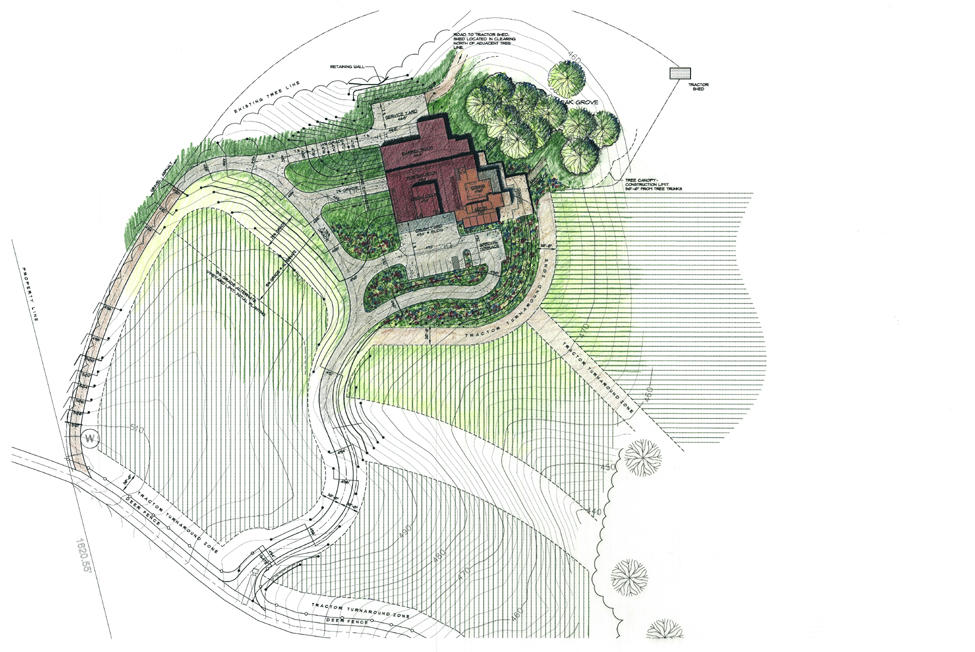Waterleaf’s work in the Pacific Northwest complements the natural characteristics of the individual sites’ local climate and ecosystem. Driven by the individual passions of our staff, the incorporation of sustainable systems is one way that we measure the success of our projects. Whether or not a project is to achieve formal LEED certification, we build a base level of sustainable measures into all of our project designs. Waterleaf has adopted the 2030 Challenge to work towards carbon neutrality, and we are proud to be a trade ally with the EnergyTrust of Oregon’s New Buildings program.
Nestled into a hillside overlooking the Chehalem Valley, this 16,000 sf winery seems to spring from the land itself to reflect the winemaker’s values, spirit, and winemaking philosophy. Harmony with its setting and energy conservation were primary considerations in the design of Penner-Ash.
• The winery’s clerestory windows capitalize on daylighting to enhance the work environment while reducing energy consumed for electrical lighting, allowing for natural ventilation and flushing the underside of the vaulted ceiling where warm summer air collects.
• The wine production and storage areas are carved right into the hillside, minimizing swings in temperature and humidity and helping to achieve the desired atmosphere for proper cellaring of wine in barrels and bottle.
• Natural building materials from local sources reduced energy expenditures and transportation.
Nestled into a hillside overlooking the Chehalem Valley, this 16,000 sf winery seems to spring from the land itself to reflect the winemaker’s values, spirit, and winemaking philosophy. Harmony with its setting and energy conservation were primary considerations in the design of Penner-Ash.
• The winery’s clerestory windows capitalize on daylighting to enhance the work environment while reducing energy consumed for electrical lighting, allowing for natural ventilation and flushing the underside of the vaulted ceiling where warm summer air collects.
• The wine production and storage areas are carved right into the hillside, minimizing swings in temperature and humidity and helping to achieve the desired atmosphere for proper cellaring of wine in barrels and bottle.
• Natural building materials from local sources reduced energy expenditures and transportation.


